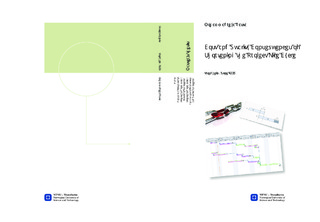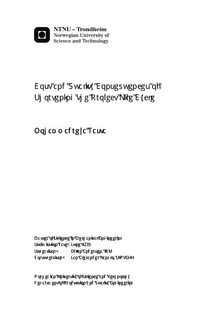| dc.description.abstract | Shortening duration of project is a challenging task. If time is reduced with no attention is paid to additional risk, not only no time reduction is achieved but also it can exert counter effect by increasing the time, imposing more expenses, and causing quality loss due to lack of meeting the customer expectations. Two methods were approved by PMI and they have been extensively discussed in literature, they are Fast Tracking and Critical Chain methods. Fast tracking performs two sequential activity or project phases in parallel, but it suffers from additional risk of rework due to early freezing and early releasing information from upstream task to downstream task. In addition, Critical chain gets a grip on problem of previous methods in scheduling with taking into account the resource constraint and managing project uncertainty through introducing resource dependent chain of activities rather critical path and placing buffer in paths at project schedule. Although many valuable works have been done to direct both methods toward perfection, but there are still some fertile areas for research. This research has sort of mixing both qualitative and quantitative approach. It is qualitative and theoretical work due to using data from literature and it is quantitative due to application of simulation and fictious example to put to the test and demonstrate the proposed methods. Three main problems are considered and it is sought to give proper response to them. First is to mitigate risk of overlapping in fast tracking method; second is to adjust buffer size and time trigger points for action in critical chain; third is to probe into possibility of combing two methods and assess possible challenges.Five major results have been obtained by this research. Two of them are associated with fast tracking method through proposing overlapping strategy framework and suggesting an idea to mitigate risk of overlapping. Proposed overlapping strategy framework takes into account three characteristics of task including evolution, sensitivity, and production rate. It provides better insight to apply right strategy at right place while reduces the complexity of previous framework. Also, time sensitivity indexes are suggested to apply for selection of low risky pair of activities to overlap in critical path(s) and mitigate risk of overlapping.The three left outcomes are associated with critical chain method and providing somesuggestions including sensitive chain, buffer sizing, and time trigger pints for action in buffer management. Sensitive chain refers to critical chain that contains risky activities in project schedule. Further, a heuristic method based on time sensitivity indexes is suggested to calibrate buffer size with consideration to risky activities. Finally, two solutions are proposed to adjust time trigger points in fever chart including qualitative approach based on risk matrix and quantitative approach based on time sensitivity indexes. Additionally, incorporation of fast tracking method into critical chain is investigated. Then, three requirements are advised to be fulfilled before performing overlap. At the end, possibility of change in critical chain and confronting with widespread disorder in project schedule due to overlap two activities in critical chain are debated. | nb_NO |

